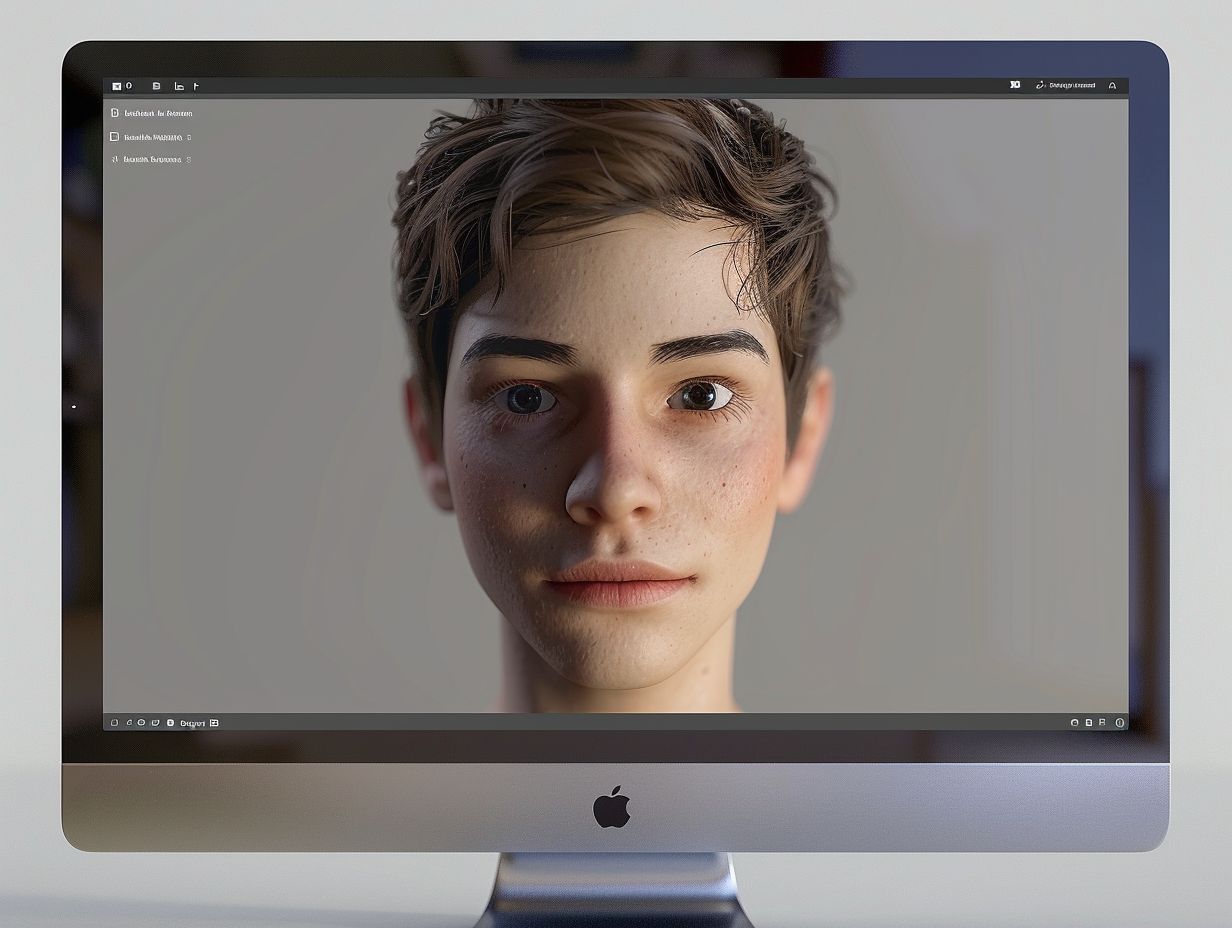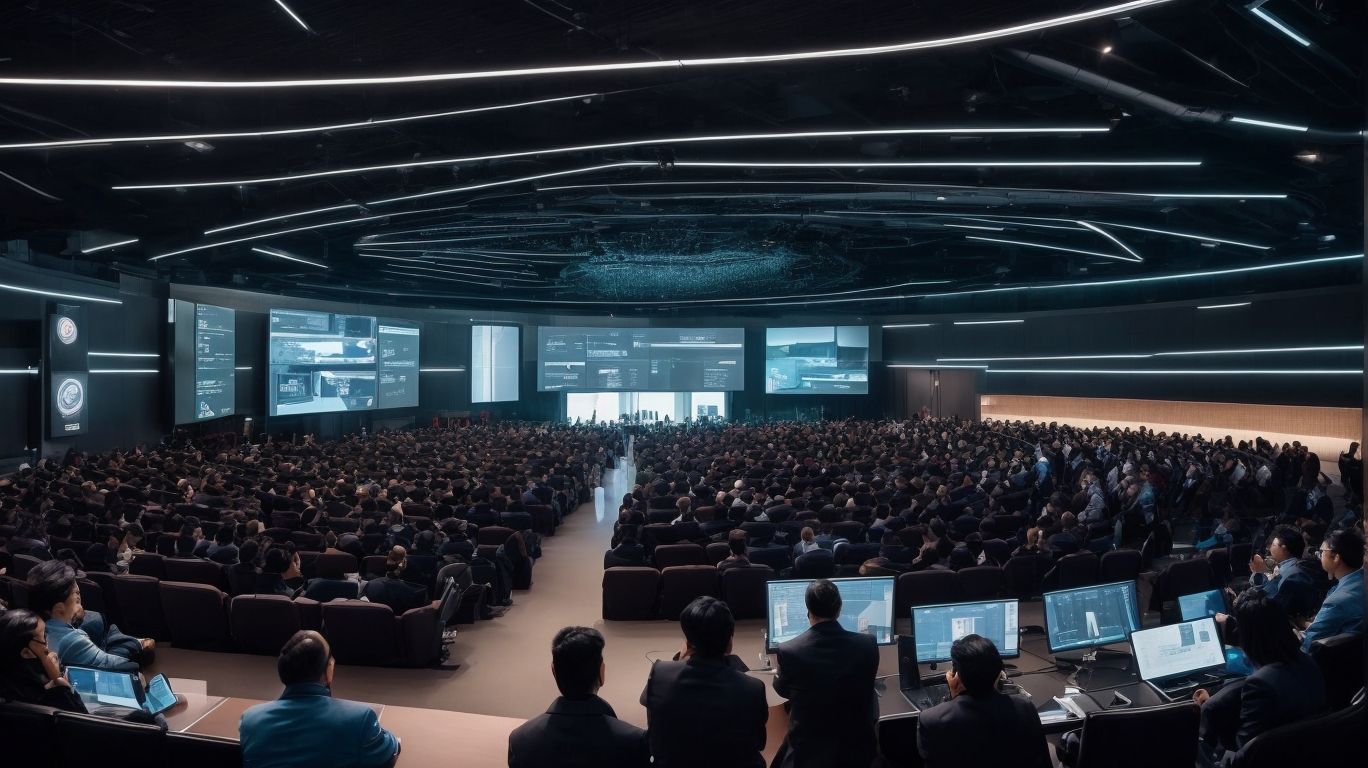In today’s digital age, the use of Artificial Intelligence (AI) has permeated various industries, revolutionizing processes and enhancing efficiency. Video editing, in particular, has greatly benefited from the integration of AI tools, offering a myriad of capabilities to streamline and elevate the editing process. So we will be diving into how to use AI for video editing.
Impact-Site-Verification: c0e418b0-d23e-4c25-a155-9e56840baed1
From automated editing software to advanced image recognition and motion tracking tools, AI has significantly transformed the landscape of video editing.
In this comprehensive guide, we will delve into the realm of AI in video editing, exploring its applications, benefits, limitations, and future prospects. We will dissect the various AI tools available for video editing, outlining their unique functionalities and how they can be leveraged to optimize the editing workflow.
We will provide insights on how to choose the right AI tool for video editing, emphasizing the key features to consider for a seamless editing experience.
We will equip you with a step-by-step guide on utilizing AI tools for video editing, empowering you to harness the full potential of these innovative technologies. While AI brings forth a multitude of advantages, we will also shed light on its limitations, addressing factors such as creativity constraints, dependence on source material quality, and cost considerations.
We will gaze into the future of AI in video editing, forecasting the advancements and transformations that lie ahead in this dynamic field. Join us on this enlightening journey as we unravel the intricacies of AI in video editing and pave the way for a new era of creativity and efficiency.
What is AI?
Artificial Intelligence (AI) refers to the simulation of human intelligence processes by machines, especially computer systems.
It encompasses various technologies such as machine learning, which enables AI systems to learn from data and improve their performance over time. The applications of AI are far-reaching, including automation of repetitive tasks, analysis of big data for insights and predictions, natural language processing, and robotics.
The rapid technological advancements in AI have led to significant improvements in areas such as healthcare, finance, transportation, and customer service, revolutionizing how industries operate and enhancing the overall quality of life for individuals.
How is AI Used in Video Editing?
AI is revolutionizing the video editing process by leveraging advanced algorithms and innovative techniques to enhance creativity and efficiency in video production.
This integration of AI technology has profoundly impacted the workflow of video creators and professional editors. It allows for streamlined processes, quickens the editing phase, and facilitates enhanced content creation. With AI’s ability to analyze data, recognize patterns, and suggest editing enhancements, it provides a smart and efficient solution for post-production tasks. This development is redefining the standards of video editing, offering a combination of precision, speed, and creative assistance that was previously unimaginable.
What Are the Benefits of Using AI in Video Editing?
The utilization of AI in video editing offers numerous benefits, including enhanced efficiency, productivity, and optimization of the editing process, leading to significant time-saving and resource optimization.
AI-powered video editing also enables seamless integration of intelligent editing tools, thereby offering a more streamlined and user-friendly experience for video creators. AI algorithms can efficiently analyze and process large volumes of data, which effectively enhances the overall quality of video effects. This not only accelerates the entire editing process but also ensures a high standard of output, further improving the user experience and resource utilization.
What Are the Different AI Tools for Video Editing?
AI-driven video editing tools encompass a diverse range of software applications designed to facilitate seamless integration, advanced editing techniques, and intelligent enhancement tools for professionals in the media industry.
These AI tools utilize machine learning algorithms and computer vision to automate tasks such as object recognition, scene detection, and color correction, significantly speeding up the video production workflow. They offer features like real-time feedback, automated editing suggestions, and personalized content insights, revolutionizing the way multimedia content is created and edited.
The implications of these AI tools for the media industry are profound, as they enable professionals to focus more on creative storytelling and strategic decision-making, rather than the technicalities of professional editing.
Automated Video Editing Software
Automated video editing software powered by AI technology streamlines the post-production process, offering innovative solutions for efficient editing, video rendering, and seamless transitions.
It significantly reduces the time required for complex editing tasks, such as color grading, audio synchronization, and visual effects, promoting efficient workflow and time-saving capabilities. The AI technology ensures accuracy in identifying optimal cuts and transitions, enhancing the overall quality of the video. In addition, automated video editing software expedites the rendering process, allowing content creators to generate high-quality videos in a fraction of the time it would take with traditional editing methods.
The seamless transitions facilitated by this technology contribute to a polished and professional final product.”
Voice Recognition Software
Voice recognition software integrated with AI enhances the user experience by enabling real-time editing, precision control, and seamless integration with video formats, optimizing the video production workflow for content creators.
This software incorporates advanced algorithms to accurately interpret voice commands, allowing users to effortlessly navigate through editing tools and make adjustments in real time. With an intuitive user interface, content creators can easily select, trim, and arrange video clips using voice commands, streamlining the editing process.
The seamless integration with various video formats ensures compatibility and smooth transition between different media files, eliminating the need for manual file conversions. Voice recognition software revolutionizes video editing by offering convenience, efficiency, and precision.
Image Recognition Software
AI-powered image recognition software plays a pivotal role in video enhancement, offering advanced tools for motion tracking, facial recognition, and color grading to elevate the visual storytelling elements of video compositions.
By utilizing sophisticated algorithms, this software enables precise motion tracking, enhancing the portrayal of movement in videos. It also facilitates seamless identification of individuals through robust facial recognition capabilities, contributing to improved security and personalized user experiences.
The software’s advanced color grading features enable filmmakers to create captivating visual narratives by adjusting the color tones and enhancing the overall aesthetic appeal of the video content.”
Motion Tracking Software
AI-driven motion tracking software empowers creators with the ability to execute precise motion graphics, seamless transitions, and dynamic video compositions, enhancing the overall quality of visual storytelling and video reformatting.
It enables the seamless integration of visual effects, allowing for the creation of captivating and immersive experiences. By accurately tracking movement within video footage, this software provides a foundation for intricate visual effects, such as augmented reality elements and realistic 3D character animations.
It streamlines the process of video reformatting, ensuring that content can adapt to various screen sizes, optimizing the viewing experience across different platforms and devices.
How to Choose the Right AI Tool for Video Editing?
Selecting the most suitable AI tool for video editing involves evaluating the customization options, technology integration, and compatibility with the existing video production workflow to ensure seamless collaboration and content management.
This process requires careful consideration of the tool’s software integration capabilities, as well as its ability to streamline project management tasks. The selected AI tool should seamlessly integrate with other software used in video editing, enabling efficient management of content and collaborative work across teams. It should offer advanced features for enhancing video content, such as automated editing functions and intelligent content analysis, thereby enhancing the overall video editing experience and productivity.
What Are the Key Features to Look for in an AI Video Editing Tool?
When evaluating an AI video editing tool, key features such as user-friendly interface, adaptation capabilities, and efficient video storage management are essential to streamline the editing process and optimize the video production workflow for content creators.
A user-friendly interface is crucial for simplifying the editing process and ensuring that creators can easily access the tool’s functionalities. The tool’s adaptation capabilities play a significant role in catering to diverse editing needs, allowing for seamless integration with various video formats and styles.
Efficient video storage management is also a critical aspect, ensuring that large video files are stored and accessed without compromising the editing experience. The integration of these features enables a smoother and more intuitive user experience, aligning with the advancement of technology in video editing tools.
How to Use AI Tools for Video Editing?
Leveraging AI tools for video editing entails integrating them seamlessly into the workflow, empowering creators with advanced creative control, and optimizing the editing process to enhance productivity and precision in content creation.
By integrating AI tools into the workflow, creators can tap into their potential for enhanced efficiency. This allows for seamless transition between editing stages, ensuring a streamlined process. The advanced creative control afforded by AI tools empowers creators to experiment with new styles and techniques. This fosters a culture of innovation and artistic expression, while precision in content creation is honed through automated algorithms for seamless output. This symbiotic relationship between AI tools and creators elevates the video editing experience to new heights.”
Step-by-Step Guide on Using AI Tools for Video Editing
A step-by-step guide to using AI tools for video editing involves seamless technology integration, efficient video publishing, and leveraging productivity tools to streamline the post-production process, ensuring high-quality video distribution and media exporting.
This process begins with integrating AI technology into the video editing software, allowing for automated tasks such as sorting through footage, applying filters, and enhancing audio. Once the editing is complete, these tools also facilitate quick and simple video publishing to various platforms.
AI-powered productivity tools can optimize workflow by automating repetitive tasks like transcribing, captioning, and optimizing video content for different platforms. By utilizing these tools, content creators can ensure efficient media exporting while leveraging analytics to enhance video quality and engagement.
What Are the Limitations of AI for Video Editing?
While AI enhances various aspects of video editing, limitations such as dependence on the quality of source material, lack of creativity, and the cost of AI tools present challenges in achieving optimal results in professional editing and post-production processes.
It is undeniable that AI has revolutionized video editing, especially in terms of automating repetitive tasks, enhancing efficiency, and making resource optimization more feasible. The inability of AI to match the intuitive creativity and artistic judgment of human editors remains a significant constraint.
The dependence on high-quality source material restricts the AI’s ability to generate truly professional-grade outputs, as it often struggles with poorly captured or low-resolution footage, affecting the overall video quality. The costs associated with implementing advanced AI tools for video editing can be prohibitive for many production teams, especially for smaller-scale projects.
Lack of Creativity
One of the limitations of AI in video editing is its potential impact on creativity, as the automated nature of certain processes may limit the innovative input and artistic expression of creators in the post-production phase.
While AI in video editing can streamline tasks and enhance efficiency, there is a concern that reliance on automated processes could potentially stifle the exploration of new editing techniques and unconventional visual storytelling. As professionals in the film industry strive for continuous innovation and creativity, the balance between utilizing AI for productivity and preserving the human touch in artistic expression becomes critical for professional development.
Dependence on Quality of Source Material
AI’s reliance on the quality of source material poses a limitation in video editing, as the effectiveness of AI tools is closely tied to the initial video footage, requiring high precision and accuracy to deliver optimal results in post-production processing.
The quality of the source material impacts the ability of AI to accurately identify and enhance key elements within the video, such as color grading, image stabilization, and scene composition. These factors heavily influence the final output, directly affecting the overall video quality and viewer experience.
Higher-quality source material enables AI to apply more advanced editing techniques, resulting in a more polished and professional-looking end product. Therefore, it is imperative for AI-driven video editing to have access to top-notch source material to ensure the best possible outcome.
Cost of AI Tools for Video Editing
The cost associated with implementing AI tools for video editing can be a limiting factor, requiring careful consideration of software integration, resource optimization, and the long-term benefits in enhancing the post-production process and video distribution.
To effectively integrate these AI tools, it’s essential to assess their compatibility with existing editing software, ensuring seamless project collaboration and efficient time management. By optimizing resources, such as leveraging AI for repetitive tasks, organizations can achieve significant cost savings over time. The cost-benefit analysis should encompass the enhanced quality, speed, and precision in video editing, ultimately leading to competitive advantages and heightened market relevance.
What is the Future of AI for Video Editing?
The future of AI in video editing holds the promise of continued technological innovation, seamless integration with creative and professional workflows, and the development of advanced algorithms to further enhance the efficiency and precision of the post-production process.
With the evolution of AI, video editing is poised to experience enhanced capabilities for automating repetitive tasks, real-time content analysis, and personalized storytelling. As technology integration continues to advance, AI-driven video editing tools will likely become more accessible, enabling video marketers and content creators to streamline their workflows, unleash creativity, and engage audiences with compelling visual narratives.
This progress in AI for video editing underscores the potential for a fundamental shift in how stories are told through the medium of video, adding depth and impact to content creation and consumption.





